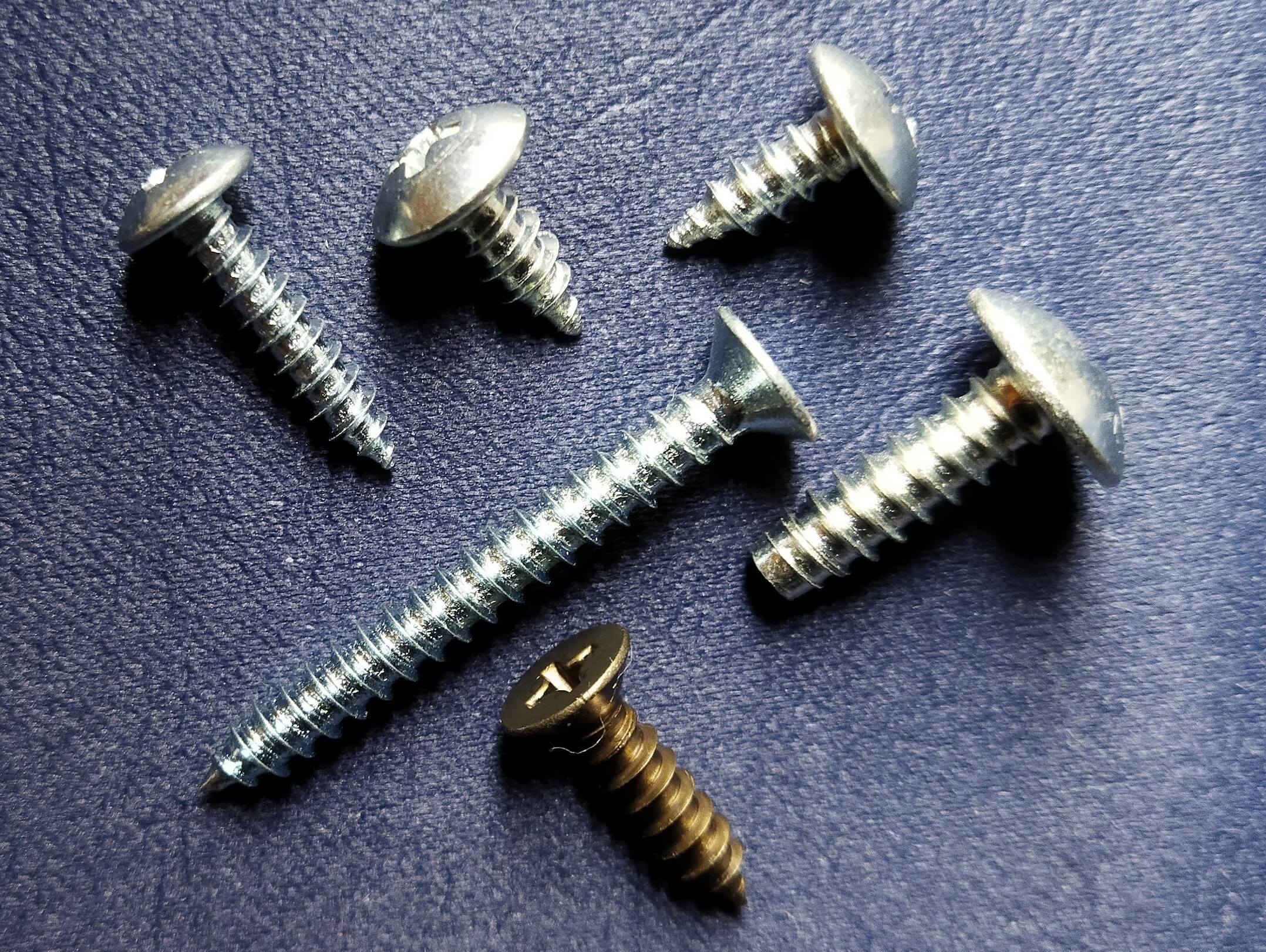What Is a Self-Tapping Screw?
 Self-Tapping Screws are screws that can form threads when they are screwed in, even if the female threads (wood, metal, etc.) do not have threads.
Self-Tapping Screws are screws that can form threads when they are screwed in, even if the female threads (wood, metal, etc.) do not have threads.
Since no processing of the mating side (female thread side) is required, this type of screw is very efficient in terms of work efficiency and cost.
Uses of Self-Tapping Screws
Self-Tapping Screws are mainly used to fasten wood, steel plate, aluminum alloy plate, and resin.
Self-Tapping Screws can be used for a wide variety of applications as long as the material is thin. Self-Tapping Screws are available in six different thread shapes, and it is important to select one depending on the material to be fastened.
Features of Self-Tapping Screws
Self-Tapping Screws are characterized by the fact that they can be used to fasten different parts together by simply screwing them into a pre-drilled hole to form a female thread. With ordinary screws, a pre-drilled hole and tapping (threading) are required to create a female thread in advance.
Self-Tapping Screws are widely used by professionals and DIYers alike because they require less work to fasten two parts and have stronger fastening force. On the other hand, once a screw is tightened, it is difficult to loosen.
The disadvantage is that if the screw is not tightened properly, the shape of the screw is memorized on the female thread.
1. Difference From Drill Screws
The difference between a drill screw and a threaded screw is whether or not a pre-drilled hole is required. Drill screws have a drilled tip and can be pre-drilled, tapped, and tightened in a single process, and are mainly used to fasten steel and other metals.
2. Difference From Wood Screws
Self-Tapping Screws can be used for a wide range of materials such as wood, steel plates, aluminum alloy plates, and resin, while wood screws are, as the name suggests, for wood only. This is because wood contains moisture, and as it dries out over time, the wood becomes thinner, causing it to loosen and come off with regular self-tapping screws.
Wood screws are not threaded at the bottom of the neck and are slightly thicker, so that they do not loosen and can be securely fastened even if the wood becomes thin.
Other Information on Self-Tapping Screws
1.Types of Self-Tapping Screw Heads
There are three types of self-tapping screw heads: pan head, countersunk head, and truss head.
- Self-Tapping Screws
This is the most widely used self-tapping screw. - Flat Head Self-Tapping Screw
This type of screw has a flat, dish-shaped head and is used when the entire head is to be embedded. Therefore, a conical hole for embedding the head must be drilled in the material beforehand. - Truss Head Self-Tapping Screws
Truss-head Self-Tapping Screws are used when the diameter of the head is larger than that of a flat-head self-tapping screw and the tightening strength is required.
There are various other types of self-tapping screws, such as Bind Head Tapping Screws and Round Self-Tapping Screws.
2. Poor Fastening
Self-Tapping Screws are used to tighten screws, but they can also be used to tighten and remove screws. Insufficient torque may be applied when fastening the screw, and the self-tapping screw may not seat.
Conversely, applying too much tightening torque in an attempt to solve this problem can easily lead to various problems, such as breaking the fastening object or self-tapping screw itself.
To prevent problems before they occur, the appropriate size of the pre-hole, based on conditions such as the outside diameter of the self-tapping screw, is listed on the screw package or other information.
Repeated installation and removal of self-tapping screws will gradually reduce the fastening strength and eventually destroy the screw holes. In addition, the axial force may also gradually decrease as the material being tightened undergoes changes over time due to vibration or heat, so it is necessary to conduct tests under a variety of conditions and consider countermeasures.